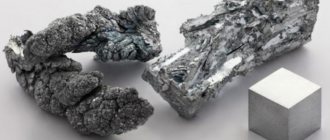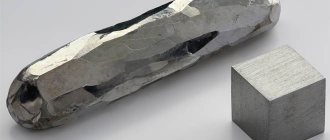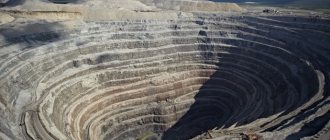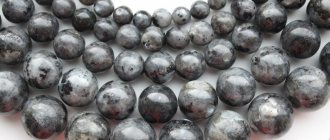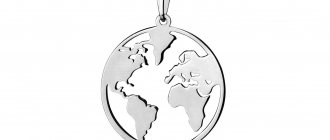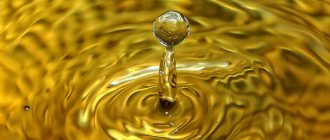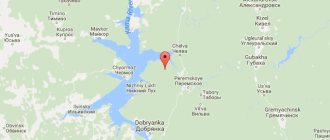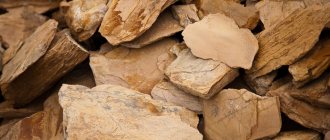| Uranus | |
| Atomic number | 92 |
| Appearance of a simple substance | |
| Properties of the atom | |
| Atomic mass (molar mass) | 238.0289 a. e.m. (/mol) |
| Atomic radius | 138 |
| Ionization energy (first electron) | 686.4(7.11) kJ/mol () |
| Electronic configuration | [Rn] 5f3 6d1 7s2 |
| Chemical properties | |
| Covalent radius | 142 |
| Ion radius | (+6e) 80 (+4e) 97 |
| Electronegativity (Pauling) | 1,38 |
| Electrode potential | U←U4+ -1.38V U←U3+ -1.66V U←U2+ -0.1V |
| Oxidation states | 6, 5, 4, 3 |
| Thermodynamic properties of a simple substance | |
| Density | 19,05 /³ |
| Molar heat capacity | 27.67[1]/(mol) |
| Thermal conductivity | 27,5 /(·) |
| Melting temperature | 1405,5 |
| Heat of Melting | 12.6 kJ/mol |
| Boiling temperature | 4018 |
| Heat of vaporization | 417 kJ/mol |
| Molar volume | 12.5 ³/mol |
| Crystal lattice of a simple substance | |
| Lattice structure | orthorhombic |
| Lattice parameters | 2,850 |
| c/a ratio | n/a |
| Debye temperature | n/a |
| U | 92 |
| 238,0289 | |
| 5f36d17s2 | |
| Uranus | |
Uranus
(old name
Uranium
) - a chemical element with atomic number 92 in the periodic table, atomic mass 238.029;
denoted by the symbol U ( Uranium
), belongs to the actinide family.
Story
Even in ancient times (1st century BC), natural uranium oxide was used to make yellow glaze for ceramics. Research on uranium developed like a chain reaction generated by it. At first, information about its properties, like the first impulses of a chain reaction, arrived with long interruptions, from case to case. The first important date in the history of uranium is 1789, when the German natural philosopher and chemist Martin Heinrich Klaproth restored the golden-yellow “earth” extracted from Saxon resin ore to a black metal-like substance. In honor of the most distant planet known at that time (discovered by Herschel eight years earlier), Klaproth, considering the new substance an element, named it uranium.
For fifty years, Klaproth's uranium was considered a metal. Only in 1841 did Eugene Melchior Peligot, a French chemist (1811-1890), prove that, despite the characteristic metallic luster, Klaproth's uranium is not an element, but an oxide UO2
. In 1840, Peligo managed to obtain real uranium, a heavy metal of a steel-gray color, and determine its atomic weight. The next important step in the study of uranium was made in 1874 by D. I. Mendeleev. Based on the periodic system he developed, he placed uranium in the farthest cell of his table. Previously, the atomic weight of uranium was considered to be 120. The great chemist doubled this value. 12 years later, Mendeleev’s prediction was confirmed by the experiments of the German chemist Zimmermann.
The study of uranium began in 1896: the French chemist Antoine Henri Becquerel accidentally discovered Becquerel's rays, which Marie Curie later renamed radioactivity. At the same time, the French chemist Henri Moissan managed to develop a method for producing pure uranium metal. In 1899, Rutherford discovered that the radiation of uranium preparations is inhomogeneous, that there are two types of radiation - alpha and beta rays. They carry different electrical charges; Their range in matter and ionizing ability are far from the same. A little later, in May 1900, Paul Villar discovered a third type of radiation - gamma rays.
Ernest Rutherford conducted the first experiments in 1907 to determine the age of minerals when studying radioactive uranium and thorium based on the theory of radioactivity he created together with Frederick Soddy (Soddy, Frederick, 1877-1956; Nobel Prize in Chemistry, 1921). In 1913, F. Soddy introduced the concept of isotopes
(from the Greek ισος - “equal”, “same”, and τόπος - “place”), and in 1920 he predicted that isotopes could be used to determine the geological age of rocks. In 1928, Niggot implemented, and in 1939, AOK.Nier (Nier, Alfred Otto Carl, 1911 - 1994) created the first equations for calculating age and used a mass spectrometer to separate isotopes.
In 1939, Frederic Joliot-Curie and German physicists Otto Frisch and Lise Meitner discovered an unknown phenomenon that occurs with a uranium nucleus when it is irradiated with neutrons. There was an explosive destruction of this core with the formation of new elements much lighter than uranium. This destruction was explosive in nature, fragments of food scattered in different directions at enormous speeds. Thus, a phenomenon called nuclear reaction was discovered.
In 1939-1940 Yu. B. Khariton and Ya. B. Zeldovich were the first to theoretically show that with a small enrichment of natural uranium with uranium-235, it is possible to create conditions for the continuous fission of atomic nuclei, that is, to give the process a chain character.
Opening.
Uranus was discovered in 1789 by the German chemist M. Klaproth, who named the element in honor of the discovery of the planet Uranus 8 years earlier. (Klaproth was the leading chemist of his time; he also discovered other elements, including Ce, Ti and Zr.) In fact, the substance Klaproth obtained was not elemental uranium, but an oxidized form of it, and elemental uranium was first obtained by the French chemist E. .Peligo in 1841. From the moment of discovery until the 20th century. uranium did not have the significance it has today, although many of its physical properties, as well as its atomic mass and density, were determined. In 1896, A. Becquerel established that uranium salts have radiation that illuminates a photographic plate in the dark. This discovery activated chemists to research in the field of radioactivity and in 1898, the French physicists spouses P. Curie and M. Sklodowska-Curie isolated salts of the radioactive elements polonium and radium, and E. Rutherford, F. Soddy, K. Fayans and other scientists developed the theory of radioactive decay, which laid the foundations of modern nuclear chemistry and nuclear energy.
Being in nature
Uraninite ore
Uranium is widely distributed in nature. The Clarke of uranium is 1·10-3% (wt.). The amount of uranium in a 20 km thick layer of the lithosphere is estimated at 1.3 1014 tons.
The bulk of uranium is found in acidic rocks with a high silicon
. A significant mass of uranium is concentrated in sedimentary rocks, especially those enriched in organic matter. Uranium is present in large quantities as an impurity in thorium and rare earth minerals (orthite, sphene CaTiO3[SiO4], monazite (La,Ce}PO4, zircon ZrSiO4, xenotime YPO4, etc.). The most important uranium ores are pitchblende (uranium pitch), uraninite and carnotite. The main minerals that are satellites of uranium are molybdenite MoS2, galena PbS, quartz SiO2, calcite CaCO3, hydromuscovite, etc.
| Mineral | Basic composition of the mineral | Uranium content, % |
| Uraninite | UO2, UO3 + ThO2, CeO2 | 65-74 |
| Carnotite | K2(UO2)2(VO4)2 2H2O | ~50 |
| Kasolite | PbO2 UO3 SiO2 H2O | ~40 |
| Samarskit | (Y, Er, Ce, U, Ca, Fe, Pb, Th) (Nb, Ta, Ti, Sn)2O6 | 3.15-14 |
| Brannerite | (U, Ca, Fe, Y, Th)3Ti5O15 | 40 |
| Tyuyamunit | CaO 2UO3 V2O5 nH2O | 50-60 |
| Tseynerit | Cu(UO2)2(AsO4)2 nH2O | 50-53 |
| Otenitis | Ca(UO2)2(PO4)2 nH2O | ~50 |
| Schreckingerite | Ca3NaUO2(CO3)3SO4(OH) 9H2O | 25 |
| Ouranophanes | CaO UO2 2SiO2 6H2O | ~57 |
| Fergusonite | (Y, Ce)(Fe, U)(Nb, Ta)O4 | 0.2-8 |
| Torburnite | Cu(UO2)2(PO4)2 nH2O | ~50 |
| Coffinit | U(SiO4)1-x(OH)4x | ~50 |
The main forms of uranium found in nature are uraninite, pitchblende (uranium pitch) and uranium blacks. They differ only in their forms of location; there is an age dependence: uraninite is present mainly in ancient (Precambrian rocks), pitchblende - volcanogenic and hydrothermal - mainly in Paleozoic and younger high- and medium-temperature formations; uranium blacks - mainly in young - Cenozoic and younger formations - mainly in low-temperature sedimentary rocks.
The uranium content in the earth's crust is 0.003%; it is found in the surface layer of the earth in the form of four types of deposits. First, there are veins of uraninite, or uranium pitch (uranium dioxide UO2), very rich in uranium, but rare. They are accompanied by radium deposits, since radium
is a direct product of the isotopic decay of uranium.
Such veins are found in Zaire, Canada (Great Bear Lake), Czech Republic
and
France
.
The second source of uranium is conglomerates of thorium and uranium ores together with ores of other important minerals. Conglomerates usually contain sufficient quantities of gold
and
silver
, with uranium and thorium being associated elements.
Large deposits of these ores are located in Canada, South Africa, Russia and Australia .
The third source of uranium is sedimentary rocks and sandstones rich in the mineral carnotite (potassium uranyl vanadate), which contains, in addition to uranium, a significant amount of
vanadium
and other elements.
Such ores are found in the western states of the United States
.
Iron-uranium shales and phosphate ores constitute a fourth source of sediment. Swedish
shales .
Some phosphate ores in Morocco and the United States contain significant amounts of uranium, and phosphate deposits in Angola
and the Central African Republic are even richer in uranium.
Most lignites and some coals usually contain uranium impurities. Uranium-rich lignite deposits have been found in North and South Dakota (USA) and bituminous coals in Spain
and
the Czech Republic
Place of Birth
In the lithosphere, matter is represented by massifs of four types.
They are dispersed throughout the planet:
- Uraninite veins. A rich but rare species. The value of the substance is increased by the presence of radium. Canada, Zaire, Czech Republic, France.
- Phosphate ores, iron-uranium shales. Sweden, Morocco, USA, Central African Republic, Angola.
- Sedimentary rocks rich in carnotite (containing vanadium). USA.
- Deposits of thorium-uranium ore plus gold, silver, and other valuable mineral components. Russia, Canada, Australia, South Africa.
In Russia, the main supplier of raw materials is the Chita region (93%).
The rest is provided by the mines of the Kurgan region and Buryatia.
Isotopes of uranium
Natural uranium consists of a mixture of three isotopes
: 238U - 99.2739% (half-life
T
1/2 = 4.468×109 years), 235U - 0.7024% (
T
1/2 = 7.038×108 years) and 234U - 0.0057% (
T
1/2 = 2.455×105 years). The latter isotope is not primary, but radiogenic; it is part of the radioactive 238U series.
The radioactivity of natural uranium is mainly due to the isotopes 238U and 234U; in equilibrium, their specific activities are equal. The specific activity of the 235U isotope in natural uranium is 21 times less than the activity of 238U.
There are 11 known artificial radioactive isotopes of uranium with mass numbers from 227 to 240. The longest-lived of them is 233U ( T
1/2 = 1.62×105 years) is obtained by irradiating thorium with neutrons and is capable of spontaneous fission by thermal neutrons.
The uranium isotopes 238U and 235U are the ancestors of two radioactive series. The end elements of these series are lead
206Pb and 207Pb.
Under natural conditions, the most common isotopes are 234U.
:
235U
:
238U
= 0.0054 : 0.711 : 99.283.
Half of the radioactivity of natural uranium is due to the isotope 234U
.
234U
isotope is formed due to the decay
of 238U
.
The last two, unlike other pairs of isotopes and regardless of the high migration ability of uranium, are characterized by geographic constancy of the ratio. The magnitude of this ratio depends on the age of the uranium. Numerous field measurements showed its slight fluctuations. So in rolls the value of this ratio relative to the standard varies within the range of 0.9959 - 1.0042, in salts - 0.996 - 1.005. In uranium-containing minerals (pitched pitch, uranium black, cyrtolite, rare earth ores), the value of this ratio ranges from 137.30 to 138.51; Moreover, the difference between the UIV and UVI forms has not been established; in sphene - 138.4. 235U
isotope was detected in some meteorites . Its lowest concentration in terrestrial conditions was found in 1972 by the French researcher Bujigues in the town of Oklo in Africa (deposit in Gabon). Thus, normal uranium contains 0.7025% uranium 235U, while in Oklo it is reduced to 0.557%. This confirmed the hypothesis of a natural nuclear reactor leading to isotope burnup, predicted by George W. Wetherill of the University of California at Los Angeles and Mark G. Inghram of the University of Chicago and Paul K. Kuroda. , a chemist from the University of Arkansas, who described the process back in 1956. In addition, natural nuclear reactors were found in these same districts: Okelobondo, Bangombe, etc. Currently, about 17 natural nuclear reactors are known.
World reserves
Planetary uranium reserves are estimated differently. According to the World Nuclear Association, in 2022 they amounted to 6.1426 million tons.
Other sources indicate a figure of 5.5 million tons. Although, it is stipulated that proven reserves amount to 3.3 million tons, and 2.2 are estimated. The yet undiscovered deposits are estimated at 10.2 million tons. In percentage terms, uranium reserves are distributed as follows by country and continent:
- Australia – 40%.
- Canada – 15%.
- Kazakhstan – 13%.
- Brazil – 8%.
- South Africa – 6.5%.
Receipt
The very first stage of uranium production is concentration. The rock is crushed and mixed with water. Heavy suspension components settle faster. If the rock contains primary uranium minerals, they precipitate quickly: these are heavy minerals. Secondary uranium minerals are lighter, in which case the heavy waste rock settles out earlier. (However, it is not always truly empty; it may contain many useful elements, including uranium).
The next stage is leaching of concentrates, transferring uranium into solution. Acid and alkaline leaching are used. The first is cheaper because sulfuric acid is used to extract uranium. But if in the feedstock, such as uranium tar
, uranium is in a tetravalent state, then this method is not applicable: tetravalent uranium is practically insoluble in sulfuric acid. In this case, you must either resort to alkaline leaching or pre-oxidize the uranium to the hexavalent state.
Acid leaching is also not used in cases where the uranium concentrate contains dolomite or magnesite, which react with sulfuric acid. In these cases, use caustic soda ( sodium
).
The problem of uranium leaching from ores is solved by oxygen blowing. A stream of oxygen is supplied to a mixture of uranium ore and sulfide minerals heated to 150 °C. In this case, sulfuric acid is formed from sulfur minerals, which washes away the uranium.
At the next stage, uranium must be selectively isolated from the resulting solution. Modern methods - extraction and ion exchange - can solve this problem.
The solution contains not only uranium, but also other cations. Some of them, under certain conditions, behave in the same way as uranium: they are extracted with the same organic solvents, deposited on the same ion exchange resins, and precipitate under the same conditions. Therefore, to selectively isolate uranium, it is necessary to use many redox reactions in order to get rid of one or another unwanted companion at each stage. On modern ion exchange resins, uranium is released very selectively.
Ion exchange and extraction methods
They are also good because they allow uranium to be extracted quite completely from poor solutions (uranium content is tenths of a gram per liter).
After these operations, uranium is converted into a solid state - into one of the oxides or into UF4 tetrafluoride. But this uranium still needs to be purified from impurities with a large thermal neutron capture cross section - boron ,
cadmium
, hafnium. Their content in the final product should not exceed hundred thousandths and millionths of a percent. To remove these impurities, a commercially pure uranium compound is dissolved in nitric acid. In this case, uranyl nitrate UO2(NO3)2 is formed, which, during extraction with tributyl phosphate and some other substances, is further purified to the required standards. Then this substance is crystallized (or peroxide UO4 2H2O is precipitated) and carefully calcined. As a result of this operation, uranium trioxide UO3 is formed, which is reduced with hydrogen to UO2.
Uranium dioxide UO2 is exposed to dry hydrogen fluoride at temperatures from 430 to 600 °C to produce UF4 tetrafluoride. Uranium metal is reduced from this compound using calcium.
or
magnesium
.
Gas centrifugation.
The dominant method of isotope separation for new production facilities, although existing facilities are mostly gaseous diffusion. Each centrifuge provides a much greater separation coefficient than a single gas stage. Much fewer stages are required, only about a thousand, although the cost of each centrifuge is much higher.
Gas centrifugation requires ~1/10 of the energy required by gaseous diffusion (its energy consumption is 100-250 kWh/MPP-kg) and allows for easier scale-up of production. Of the developing nuclear countries, Pakistan and India possess this rather complex technology.
Physical properties
Uranium is a very heavy, silvery-white, shiny metal. In its pure form, it is slightly softer than steel, malleable, flexible, and has slight paramagnetic properties. Uranium has three allotropic forms: alpha (prismatic, stable up to 667.7 °C), beta (tetragonal, stable from 667.7 °C to 774.8 °C), gamma (with a body-centered cubic structure, existing from 774. 8 °C to melting point).
Radioactive properties of some isotopes of uranium (natural isotopes are highlighted):
| Mass number | Half life | Type of decay |
| 234 | 2.45 105 years | α |
| 235 | 7.13·108 years | α |
| 236 | 2.39·107 years | α |
| 237 | 6.75 days. | β- |
| 238 | 4.49·109 years | α |
| 239 | 23.54 min. | β- |
| 240 | 2 p.m. | β- |
Size, mass, orbit
Uranus has the following parameters:
- Mass 14.6 times that of Earth (8.683*10^25 kg);
- Area 8.1156 billion km2;
- Radius along the equator is 25559 km;
- Density 1.27 g/cm3;
- Axle tilt 97.77°;
- Orbital speed 6.81 km/s;
- The radius at the poles is 24973 km.
Orbit of Uranus
Uranus has the shape of a ball, flattened at the poles.
It is the lightest among the giant planets, because most of it is ice. The force of gravity is only 10% less than the earth's. Interesting fact : Uranus is more than 4.5 billion years old, it began to form along with other planets.
Chemical properties
Uranium can exhibit oxidation states from +III to +VI. Uranium(III) compounds form unstable red solutions and are strong reducing agents:
4UCl3 + 2H2O → 3UCl4 + UO2 + H2↑
Uranium(IV) compounds are the most stable and form green aqueous solutions.
Uranium(V) compounds are unstable and easily disproportionate in aqueous solution:
2UO2Cl → UO2Cl2 + UO2
Chemically, uranium is a very active metal. Quickly oxidizing in air, it becomes covered with a rainbow film of oxide. Fine uranium powder spontaneously ignites in air; it ignites at a temperature of 150–175 °C, forming U3O8. At 1000 °C, uranium combines with nitrogen to form yellow uranium nitride. Water can corrode metal, slowly at low temperatures and quickly at high temperatures, as well as when uranium powder is finely ground. Uranium dissolves in hydrochloric, nitric and other acids, forming tetravalent salts, but does not interact with alkalis. Uranium displaces hydrogen
from inorganic acids and salt solutions of metals such as
mercury , silver , copper , tin , platinum and gold
. When shaken vigorously, the metal particles of uranium begin to glow. Uranium has four oxidation states - III-VI. Hexavalent compounds include uranium trioxide (uranyl oxide) UO3 and uranium uranium chloride UO2Cl2. Uranium tetrachloride UCl4 and uranium dioxide UO2 are examples of tetravalent uranium. Substances containing tetravalent uranium are usually unstable and become hexavalent when exposed to air for a long time. Uranyl salts, such as uranyl chloride, decompose in the presence of bright light or organic matter.
Connections.
Uranium, a highly reactive metal, has oxidation states from +3 to +6, is close to beryllium in the activity series, interacts with all non-metals and forms intermetallic compounds with Al, Be, Bi, Co, Cu, Fe, Hg, Mg, Ni, Pb, Sn and Zn. Finely crushed uranium is especially reactive and at temperatures above 500 ° C it often enters into reactions characteristic of uranium hydride. Lump uranium or shavings burn brightly at 700–1000° C, and uranium vapor burns already at 150–250° C; uranium reacts with HF at 200–400° C, forming UF4 and H2. Uranium dissolves slowly in concentrated HF or H2SO4 and 85% H3PO4 even at 90 ° C, but easily reacts with conc. HCl and less active with HBr or HI. The most active and rapid reactions of uranium with dilute and concentrated HNO3 occur with the formation of uranyl nitrate ( see below
).
In the presence of HCl, uranium quickly dissolves in organic acids, forming organic U4+ salts. Depending on the degree of oxidation, uranium forms several types of salts (the most important among them are with U4+, one of them UCl4 is an easily oxidized green salt); uranyl salts (radical UO22+) of the UO2(NO3)2 type are yellow in color and fluoresce green. Uranyl salts are formed when the amphoteric oxide UO3 (yellow color) is dissolved in an acidic medium. In an alkaline environment, UO3 forms uranates such as Na2UO4 or Na2U2O7. The latter compound (“yellow uranyl”) is used for the manufacture of porcelain glazes and in the production of fluorescent glasses. See also
INDUSTRIAL CERAMICS.
Uranium halides were widely studied in 1940–1950, as they were used to develop methods for separating uranium isotopes for the atomic bomb or nuclear reactor. Uranium trifluoride UF3 was obtained by the reduction of UF4 with hydrogen, and uranium tetrafluoride UF4 is obtained in various ways by reactions of HF with oxides such as UO3 or U3O8 or by electrolytic reduction of uranyl compounds. Uranium hexafluoride UF6 is obtained by fluorination of U or UF4 with elemental fluorine or by the action of oxygen on UF4. Hexafluoride forms transparent crystals with a high refractive index at 64 ° C (1137 mm Hg); the compound is volatile (under normal pressure it sublimes at 56.54 ° C). Uranium oxohalides, for example, oxofluorides, have the composition UO2F2 (uranyl fluoride), UOF2 (uranium oxide difluoride). see also
CHEMICAL ELEMENTS; RADIOACTIVITY; URANINITE; URANIUM INDUSTRY.
Application
Nuclear fuel
The most widely used isotope
uranium 235U, in which a self-sustaining nuclear chain reaction is possible. Therefore, this isotope is used as fuel in nuclear reactors, as well as in nuclear weapons. The separation of the U235 isotope from natural uranium is a complex technological problem (see isotope separation).
The U238 isotope is capable of fission under the influence of bombardment by high-energy neutrons; this feature is used to increase the power of thermonuclear weapons (neutrons generated by a thermonuclear reaction are used).
As a result of neutron capture followed by β-decay, 238U can be converted into 239Pu, which is then used as nuclear fuel.
Uranium-233, artificially produced in reactors from thorium (thorium-232 captures a neutron and turns into thorium-233, which decays into protactinium-233 and then into uranium-233), may in the future become a common nuclear fuel for nuclear power plants (already now there are reactors that use this nuclide as fuel, for example KAMINI in India) and the production of atomic bombs (critical mass of about 16 kg).
Uranium-233 is also the most promising fuel for gas-phase nuclear rocket engines.
Geology
The main use of uranium is determining the age of minerals and rocks in order to determine the sequence of geological processes. This is what Geochronology and Theoretical Geochronology do. Solving the problem of mixing and sources of matter is also essential.
The solution to the problem is based on the equations of radioactive decay described by the equations.
where 238Uo
,
235Uo
- modern concentrations of uranium isotopes;
; are the decay constants
of uranium atoms
238U
and
235U
.
Their combination is very important:
.
Here
Due to the fact that rocks contain different concentrations of uranium, they have different radioactivity. This property is used when identifying rocks using geophysical methods. This method is most widely used in petroleum geology during geophysical surveys of wells; this complex includes, in particular, γ - logging or neutron gamma logging, gamma-gamma logging, etc. With their help, reservoirs and seals are identified.
Other Applications
A small addition of uranium gives a beautiful yellow-green fluorescence to glass (Uranium glass).
Sodium uranate Na2U2O7 was used as a yellow pigment in painting.
Uranium compounds were used as paints for painting on porcelain and for ceramic glazes and enamels (painted in colors: yellow, brown, green and black, depending on the degree of oxidation).
Some uranium compounds are photosensitive.
At the beginning of the 20th century, uranyl nitrate
widely used to enhance negatives and color (tint) positives (photographic prints) brown.
Uranium-235 carbide alloyed with niobium carbide and zirconium carbide is used as fuel for nuclear jet engines (working fluid - hydrogen + hexane).
Alloys of iron and depleted uranium (uranium-238) are used as powerful magnetostrictive materials.
Depleted uranium
Depleted uranium
After 235U and 234U are extracted from natural uranium, the remaining material (uranium-238) is called "depleted uranium" because it is depleted in the 235 isotope. According to some estimates, the United States stores about 560,000 tons of depleted uranium hexafluoride (UF6).
Depleted uranium is half as radioactive as natural uranium, mainly due to the removal of 234U from it. Because the primary use of uranium is energy production, depleted uranium is a low-use product with low economic value.
Its use is mainly associated with the high density of uranium and its relatively low cost. Depleted uranium is used for radiation shielding (ironically) and as ballast in aerospace applications such as aircraft control surfaces. Each Boeing 747 aircraft contains 1,500 kg of depleted uranium for these purposes. This material is also used in high-speed gyroscope rotors, large flywheels, as ballast in space landers and racing yachts, and when drilling oil wells.
Armor-piercing projectile cores
The tip (liner) of a 30 mm caliber projectile (GAU-8 guns of an A-10 aircraft) with a diameter of about 20 mm is made of depleted uranium.
The most famous use of depleted uranium is as cores for armor-piercing projectiles. When alloyed with 2% Mo or 0.75% Ti and heat treatment (quick quenching of metal heated to 850 °C in water or oil, further holding at 450 °C for 5 hours), uranium metal becomes harder and stronger than steel (the tensile strength is greater 1600 MPa, despite the fact that for pure uranium it is 450 MPa). Combined with its high density, this makes the hardened uranium ingot an extremely effective armor piercer, similar in effectiveness to the more expensive tungsten. The heavy uranium tip also changes the mass distribution of the projectile, improving its aerodynamic stability.
Similar alloys of the Stabilla type are used in swept-finned projectiles for tank and anti-tank artillery guns.
The process of armor destruction is accompanied by the grinding of a uranium pig into dust and its ignition in air on the other side of the armor (see Pyrophoricity). About 300 tons of depleted uranium remained on the battlefield during Operation Desert Storm (mostly the remains of 30 mm GAU-8 cannon shells from A-10 attack aircraft, each shell containing 272 g of uranium alloy).
Such shells were used by NATO troops in combat operations on the territory of Yugoslavia. After their application, the environmental problem of radiation contamination of the country's territory was discussed.
Uranium was first used as a core for projectiles in the Third Reich.
Depleted uranium is used in modern tank armor, such as the M-1 Abrams tank.
Gas diffusion.
The first technology practically used on an industrial scale. Although it requires thousands of stages for high enrichment, it is a more cost-effective method than electromagnetic separation. U-235 gaseous diffusion enrichment plants are huge and have large production capacity.
The main difficulty is the creation of reliable gas diffusion barriers capable of resisting the corrosive effects of UF6. There are two main types of such barriers: thin porous membranes and barriers assembled from individual tubes. Membranes are films with pores formed by etching. For example, nitric acid will etch a 40/60 Au/Ag (Ag/Zn) alloy; or electrolytic etching of aluminum foil can produce a brittle aluminum membrane. Composite barriers are assembled from small discrete elements packed into a relatively thick porous barrier.
The technology for making diffusion barriers continues to remain classified in all countries that developed it.
Built during World War II, the K-25 facility at Oak Ridge consisted of 3,024 enrichment stages and remained in operation until the late 1970s. Developing a suitable barrier material proved difficult, causing some delay in getting the plant into operation after the war, although even the partially completed plant contributed to the stockpiling of U-235 for Little Boy. At that time, barriers were made from sintered nickel powder; attempts to create promising membranes from electrolytically etched aluminum failed. K-25 initially contained 162,000 m2 of membrane surface. This facility, with expansions, produced most of all the uranium for the US Army in the sixties. With the improvement of gas diffusion barriers, the plant's productivity increased 23 times.
Diffusion production consumes much less electricity compared to electromagnetic production, but its consumption still remains quite large. In 1981, after modernization, it had a specific power consumption of 2370 kWh/MPP-kg. Although low-enrichment uranium is a valuable raw material for the production of highly enriched uranium, low-enrichment gaseous diffusion plants cannot be easily converted to produce high-enrichment uranium. High enrichment requires many smaller stages, due to a sharp decrease in the enrichment factor and problems with criticality (accumulation of a critical mass of uranium) for larger blocks.
The huge size of the enrichment system leads to a long time of filling it with material (the substance being enriched) before the product begins to emerge. Typically, this time to establish equilibrium is 1-3 months. Gaseous diffusion technology has been widely used in a variety of countries, with even Argentina establishing a functioning enrichment facility for its (now discontinued) covert weapons program. In 1979, more than 98% of all uranium was produced using this process. By the mid-1980s, this share had dropped to 95% with the development of the centrifugation method.
Physiological action
In trace quantities (10−5–10−8%) it is found in the tissues of plants, animals and humans. It accumulates to the greatest extent by some fungi and algae. Uranium compounds are absorbed in the gastrointestinal tract (about 1%), in the lungs - 50%. The main depots in the body: spleen, kidneys, skeleton, liver, lungs and bronchopulmonary lymph nodes. The content in organs and tissues of humans and animals does not exceed 10−7 g.
Uranium and its compounds are toxic
. Aerosols of uranium and its compounds are especially dangerous. For aerosols of water-soluble uranium compounds, the MPC in air is 0.015 mg/m³, for insoluble forms of uranium the MPC is 0.075 mg/m³. When uranium enters the body, it affects all organs, being a general cellular poison. The molecular mechanism of action of uranium is associated with its ability to suppress enzyme activity. The kidneys are primarily affected (protein and sugar appear in the urine, oliguria). With chronic intoxication, disorders of hematopoiesis and the nervous system are possible.
Disadvantages of Nuclear Energy
One of the main disadvantages is the risk of accidents and their consequences for the environment. Areas contaminated with uranium radioactivity become uninhabitable.
Nuclear waste is another negative consequence. Production residues cannot be reused and must be properly disposed of. Human contact with such waste can cause genetic mutation, illness and even immediate death.
Barrels with nuclear waste
Satellites
Moons of Uranus
Moons of Uranus
Moons of Uranus
Moons of Uranus
Moons of Uranus
The planet Uranus has 27 natural satellites: 13 internal, 5 large and 9 irregular. Each has certain characteristics.
The first moons of Uranus, Titania and Oberon, were discovered by astronomer Herschel in 1787. Two years later, Ariel and Umbriel were discovered by British astronomer Lascelles. In 1948, the American Kuiper discovered Miranda. With the help of the Voyager 2 probe, it was possible to discern 11 more satellites. The last to be discovered was the irregular satellite Margarita.
Uranus' five large natural moons are quite massive. Titania has a diameter of 1578 km. But their total mass is less than that of one of Neptune’s satellites, Triton. Traces of volcanic activity have been found on the surface of Titania. Winding valleys resembling river beds up to 1000 km long are visible.
The moons are made of rock and ice. According to scientists, there is a water ocean at the boundary of the core and mantle. And Miranda is made of ice, which includes ammonia and carbon. Bizarre ice canyons are visible on its surface. Irregular satellites are small, elliptical objects with retrograde orbits that travel far from the planet.
The composition and origin of the inner satellites are similar to the planet's rings. These are small, dark-colored objects with a chaotic system. They often disrupt each other's orbits, leading to collisions. The outer satellites are “aliens” captured by the gravitational forces of Uranus. They often change their trajectory and are able to go beyond the system.
The IAU (International Astronomical Union) has agreed to name the moons of Uranus after Shakespearean characters.
Rotation
The large axial tilt caused the planet to move sideways. It rolls like a ball, spinning clockwise. Its poles face the Sun according to its orbital period. When daylight reigns continuously on one for 42 years and summer lasts, then at this time on the other it is dark and very cold.
Demonstration of the tilt of the planet Uranus
At the equator, day and night replace each other every 17 hours and 14 minutes. It is during this period of time that Uranus makes a revolution around its axis. The planet completes a full revolution around the star in 84 years.
Interesting fact : due to the axial tilt, the polar regions receive more solar energy than the equatorial regions. Why it is so much warmer at the equator remains a mystery to scientists.
According to some astrophysicists, the reason for the strong axis tilt was the collision of Uranus with a large cosmic object, which was able to turn the planet on its side. According to others, there was a certain satellite that was able to swing the axis of rotation with its gravitational field. He himself was attracted to another space object larger than Uranus.
For the blue giant, it is difficult to determine which pole is north and which is south. This happens because the magnetic field moves with the planet. Under similar conditions, different weather phenomena would constantly occur on Earth. But on Uranus, in addition to the two main magnetic poles, there are two more pairs of weaker ones.
Atmosphere, climate, temperature
The atmosphere of Uranus begins above 300 km from the upper boundary of the mantle (conventional surface). It consists of three layers located at a certain height:
- troposphere up to 50 km;
- stratosphere from 50 km to 4000 km;
- thermosphere from 4000 km to 50000 km.
In addition to hydrogen and helium, which are the basis of the atmosphere of Uranus, ammonia and methane were found in its composition. The latter gives Uranus a blue glow. Numerous clouds are located in the troposphere and have a layered structure. The lower level consists of ice, and the upper level consists of methane.
Uranus is undoubtedly the coldest planet in the solar system. On the surface, the air temperature can be -224 °C.
Interesting fact : in the thermosphere the temperature reaches 577 °C. Scientists cannot yet explain this phenomenon. After all, the distance to the Sun is very great, and there is little internal heat.
In equatorial regions, the direction of the wind is opposite to the rotation of the planet. The further from the equator, the stronger the speed of the currents. In giant vortices it can reach 900 km/h. Closer to the poles, the direction of the wind changes, and its speed rapidly decreases.
Seasonal changes
Photos of Uranus taken by Voyager 2
In close-up images taken by Voyager 2 in 1986, Uranus appeared as a calm, featureless planet without atmospheric storms. But later, observing it with modern and powerful telescopes, scientists were able to discern seasonal weather changes.
Uranus's strong axial tilt has contributed to its unusual seasons. If one pole is under the sun's rays for 42 Earth years, then the other during this entire period is in a dark, frosty winter with stormy winds.
The change of seasons on Uranus has been little studied. In 2004, a sharp change in weather was recorded. At the beginning of March, a large number of clouds appeared, the wind increased to 824 km/h, and severe thunderstorms began, which continued until July 4. In 2006, it was possible to photograph the beginning of the formation of an atmospheric vortex.
Some clouds on the planet can suddenly disappear a few hours after they appear. Others remain unchanged for decades. There are 4 “extreme” seasons on Uranus:
- southern solstice;
- northern spring;
- equinox season;
- northern solstice.
Approaching the solstice, both hemispheres of the planet are in the same conditions: either illuminated by the Sun or in the darkness of space.

